
Risk, Regulation, and Policy
Risk assessments, regulation of gene drive, and thought leadership on gene drive policy
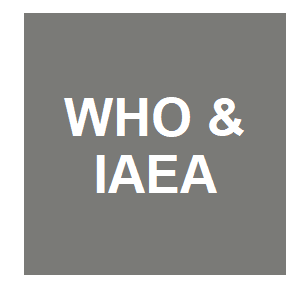
|
Guidance Framework for Testing the Sterile Insect Technique as a Vector Control Tool against Aedes-Borne DiseasesWHO & IAEA, WHO & IAEA, 2020.
This document is intended to be a comprehensive guide for programme managers tasked with recommending a “go/no-go” decision on testing, full deployment and scale-up of the sterile insect technique (SIT) in regions of the world affected by diseases transmitted by Aedes ... Keywords: bioengineering, biotechnology, policy, Synthetic biology |

|
Opinions of key stakeholders on alternative interventions for malaria control and elimination in TanzaniaM. F. Finda, N. Christofides, J. Lezaun, B. Tarimo, P. Chaki, A. H. Kelly, N. Kapologwe, P. Kazyoba, B. Emidi and F. O. Okumu, Malaria Journal, 19:164. 2020.
Malaria control in Tanzania currently relies primarily on long-lasting insecticidal nets and indoor residual spraying, alongside effective case management and behaviour change communication. This study explored opinions of key stakeholders on the national progress towards malaria ... Keywords: bioengineering, biotechnology, policy, Synthetic biology |

|
Report of the ad hoc technical expert group on risk assessmentAd Hoc Technical Expert Group on Risk Assessment, Convention on Biological Diversity, 2020.
The Conference of the Parties serving as the meeting of the Parties to the Cartagena Protocol further decided to extend the Online Forum on Risk Assessment and Risk Management to assist the AHTEG and invited submissions of information relevant to the work of the online forum and ... Keywords: bioengineering, biotechnology, policy, Synthetic biology |

|
GENE DRIVE ORGANISMS: Implications for the environment and nature conservationM. Dolezel, S. Simon, M. Otto, M. Engelhard and W. Zughart, Umweltbundesamt, 2020.
Recent advances in biotechnology aim at the genetic modification of wild living populations. Some potential applications consider self-propagating genetic elements to generate gene drive organisms (GDOs), also for nature conservation. Due to the potential of GDOs to spread ... Keywords: bioengineering, biotechnology, policy, Synthetic biology |

|
The value of existing regulatory frameworks for the environmental risk assessment of agricultural pest control using gene driveJ. Romeis, J. Collatz, D. C. M. Glandorf and M. B. Bonsall, Environmental Science & Policy, 108:19-36. 2020.
The application of (synthetic) gene drives is a powerful tool to control populations of insects that are agricultural pests, vectors of diseases, or a threat to biodiversity potentially leading to the local or global eradication of a species. The potential use of gene drive ... Keywords: bioengineering, biotechnology, policy, Synthetic biology |
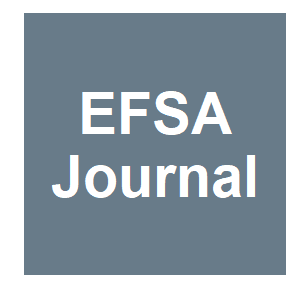
|
Stakeholder workshop “Problem formulation for the environmental risk assessment of gene drive modified insects” (15 May 2019, Brussels)European Food Safety, A., Devos, Y., Gallani, B. & Firbank, L. G, A. European Food Safety, Y. Devos, B. Gallani and L. G. Firbank, 17:1819E. 2020.
Recent advances in molecular and synthetic biology are enabling the engineering of gene drives that spread genes of interest through interbreeding populations at a frequency greater than the rate expected by simple Mendelian inheritance. At present, insects represent the most ... Keywords: bioengineering, biotechnology, policy, Synthetic biology |
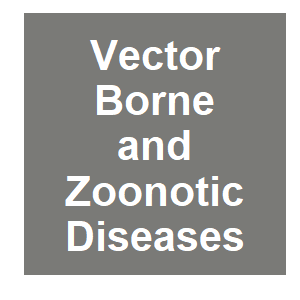
|
Toward the definition of efficacy and safety criteria for advancing gene drive-modified mosquitoes to field testingS. L. James, J. M. Marshall, G. K. Christophides, F. O. Okumu and T. Nolan, Vector Borne and Zoonotic Diseases, 2020.
Mosquitoes containing gene drive systems are being developed as complementary tools to prevent transmission of malaria and other mosquito-borne diseases. As with any new tool, decision makers and other stakeholders will need to balance risks (safety) and benefits (efficacy) when ... Keywords: bioengineering, biotechnology, policy, Synthetic biology |

|
Risk assessment challenges of synthetic gene drive organismsE. Sirinathsinghji, TWN Biosafety Briefing, 2020.
The development of gene drive organisms (GDOs) is highly controversial, as illustrated by the intense academic, political and societal debates over their potential deployment for a variety of applications from public health to conservation, agriculture and dual-use technologies. ... Keywords: bioengineering, biotechnology, policy, Synthetic biology |

|
Risk assessment challenges of synthetic gene drive organismsE. Sirinathsinghji, TWN Biosafety Briefing, 2020.
Keywords: bioengineering, biotechnology, policy, Synthetic biology |
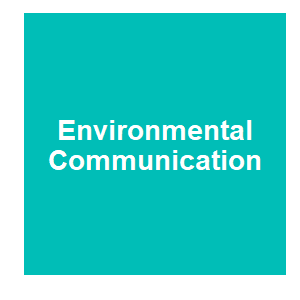
|
Public Opinion Towards Gene Drive as a Pest Control Approach for Biodiversity Conservation and the Association of Underlying WorldviewsE. A. MacDonald, J. Balanovic, E. D. Edwards, W. Abrahamse, B. Frame, A. Greenaway, R. Kannemeyer, N. Kirk, F. Medvecky, T. L. Milfont, J. C. Russell and D. M. Tompkins, Environmental Communication, 14:904-918. 2020.
Synthetic gene drive approaches are nascent technologies with potential applicability for pest control for conservation purposes. Responsible science mandates that society be engaged in a dialogue over new technology, particularly where there exist global ramifications as with ... Keywords: bioengineering, biotechnology, policy, Synthetic biology |
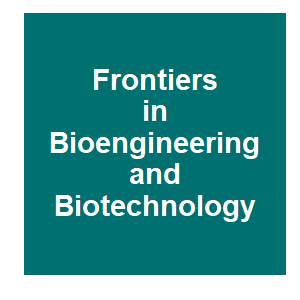
|
Regulation of GM Organisms for Invasive Species ControlH. J. Mitchell and D. Bartsch, Frontiers in Bioengineering and Biotechnology, 7:1-11. 2020.
Invasive species can cause significant harm to the environment, agriculture, and human health, but there are often very limited tools available to control their populations. Gene drives (GD) have been proposed as a new tool which could be used to control or eliminate such ... Keywords: bioengineering, biotechnology, policy, Synthetic biology |

|
Irreversible ecosystem engineering with Gene Drive OrganismsSave Our Seeds, Save Our Seeds, 2020.
Gene drive technology is a particular application of the new genetic engineering tool CRISPR/Cas9. It is designed to genetically modify, replace or eradicate wild populations or entire species. So far it works in mosquitos, mice, flies, yeast and nematodes. But in principle it ... Keywords: bioengineering, biotechnology, policy, Synthetic biology |

|
Metaphor, Trust and Support for Non-native Species ControlP. A. Kohl, S. J. Collins and M. Eichholz, Environmental Communication, 14:672-685. 2020.
This experimental study used a representative sample of U.S. residents (N = 1,042) to test whether the use of the term "invasive" increases support for non-native species control efforts. The term invasive had a small influence on support for two out of three non-native species ... Keywords: bioengineering, biotechnology, policy, Synthetic biology |

|
Technology Factsheet: Gene DrivesJ. Lunshof, C. Shachar, R. Edison, A. Jayanti, Belfer Center for Science and International Affairs, 2020.
Gene drives can be defined as genetic elements that pass from parents to unusually high numbers of their offspring due to biased inheritance (sometimes referred to as the possession of “selfish” genetic elements).1,2 There are different ways of achieving this biased ... Keywords: bioengineering, biotechnology, policy, Synthetic biology |

|
A typology of community and stakeholder engagement based on documented examples in the field of novel vector controlC. E. Schairer, R. Taitingfong, O. S. Akbari and C. S. Bloss, PLoS Neglected Tropical Diseases, 13:e0007863. 2019.
Background Despite broad consensus on the importance of community and stakeholder engagement (CSE) for guiding the development, regulation, field testing, and deployment of emerging vector control technologies (such as genetically engineered insects), the types of activities ... Keywords: bioengineering, biotechnology, policy, Synthetic biology |

|
Articulating ‘free, prior and informed consent’ (FPIC) for engineered gene drivesGeorge, D. R., T. Kuiken and J. A. Delborne, Proceedings of the Royal Society B: Biological Sciences, 286:20191484.. 2019.
Recent statements by United Nations bodies point to free, prior and informed consent (FPIC) as a potential requirement in the development of engineered gene drive applications. As a concept developed in the context of protecting Indigenous rights to self-determination in land ... Keywords: bioengineering, biotechnology, policy, Synthetic biology |

|
Exterminator genes: The right to say no to ethics dumpingBassey-Orovwuje, M., J. Thomas and T. Wakeford, Development, 62:121-127. 2019.
The scientific-industrial complex is promoting a new wave of genetically modified organisms, in particular gene drive organisms, using the same hype with which they tried to persuade society that GMOs would be a magic bullet to solve world hunger. The Gates Foundation claims that ... Keywords: bioengineering, biotechnology, policy, Synthetic biology |

|
A cross-sectional survey of biosafety professionals regarding genetically modified insectsO’Brochta, D. A., W. K. Tonui, B. Dass and S. James, Applied Biosafety, 2019:1-9. 2019.
Background:Genetic technologies such as gene editing and gene drive create challenges for existing frameworks used to assess risk and make regulatory determinations by governments and institutions. Insect genetic technologies including transgenics, gene editing, and gene drive ... Keywords: bioengineering, biotechnology, policy, Synthetic biology |

|
Plasmodium falciparum (Haemosporodia: Plasmodiidae) and O’nyong-nyong virus development in a transgenic Anopheles gambiae (Diptera: Culicidae) strainMumford, J. D., C. A. Long, S. C. Weaver, K. Miura, E. Wang, R. Rotenberry, E. M. Dotson and M. Q. Benedict, " Journal of Medical Entomology, 56:936-941. 2019.
ransgenic Anopheles gambiae Giles (Diptera: Culicidae) mosquitoes have been developed that confer sexual sterility on males that carry a transgene encoding a protein which cuts ribosomal DNA. A relevant risk concern with transgenic mosquitoes is that their capacity to transmit ... Keywords: bioengineering, biotechnology, policy, Synthetic biology |

|
What risk assessments of genetically modified organisms can learn from institutional analyses of public health risksRajan, S. R. and D. K. Letourneau, Journal of Biomedicine and Biotechnology, 2012:8. 2019.
The risks of genetically modified organisms (GMOs) are evaluated traditionally by combining hazard identification and exposure estimates to provide decision support for regulatory agencies. We question the utility of the classical risk paradigm and discuss its evolution in GMO ... Keywords: bioengineering, biotechnology, policy, Synthetic biology |

Contact
David O’Brochta
Foundation for the
National Institutes of Health
geneconvenevi@fnih.org
RSS

